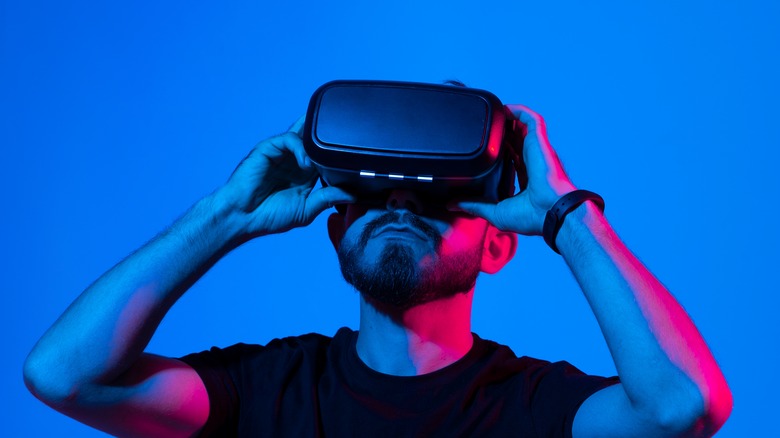Facebook's Big Bet On AR Smart Glasses Displays May Have Backfired
As early as 2017, Meta (formerly known as Facebook Inc.) had its eyes set on making consumer augmented reality glasses a thing. Although Meta has produced a successful line of VR headsets, AR glasses are an entirely different beast. They require not only a quality camera that can take in the outside world but also a crisp display that projects digital elements onto the captured footage.
In a move that squeezed out Apple, Meta signed an exclusive deal with electronics manufacturer Plessey to provide its microLED displays for Meta's AR glasses. However, although Apple is making concrete steps toward getting consumer AR glasses on the market with its Apple Vision Pro, Meta is scaling back its AR pursuit. It's been reported that Meta is dissatisfied with the displays Plessey has produced for the company. Additionally, the company is cutting costs where it can and gutting features, making its AR glasses look less impressive by the day.
Meta is being forced to use old tech in its AR glasses
According to The Information, microLED designer Plessey is unable to create a display bright enough for Meta's AR glasses. As a result, Meta decided to scrap the technology in favor of the cheaper, older liquid crystal on silicon (LCos) technology. But that's not all.
Meta's consumer AR glasses which are expected to launch in 2027, will feature another downgrade. The glasses will reportedly be designed with glass rather than the superior, more costly silicon carbide material that previous iterations relied on. This will downgrade the device's field of view from 70 to 50 degrees. In comparison, the Apple Vision Pro sports a field of view of 120.
According to The Information, the company also scrapped some of the device's additional features. Meta is bailing on a LIDAR feature that would accurately determine the range of objects by measuring the distance light takes to reflect. It is also canceling the glasses' projector that would showcase the user's augmented reality view to those around them.
Although the consumer AR glasses are being downgraded, it's reported that the glasses available next year for internal-only demonstrations will have Plessey's microLED displays. But this is only because the company is too far along in its development to alter its design.
Despite the race between Apple and Meta on who could create the most cutting-edge AR glasses remaining neck and neck for some time, it seems Meta is starting to lag behind.

